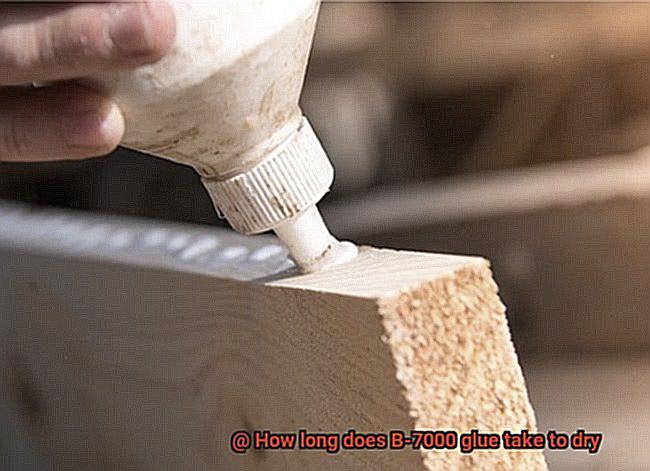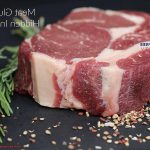Choosing the right glue for your DIY projects or professional repairs can feel like navigating a maze. But fear not, because B-7000 glue has emerged as a fan favorite, thanks to its versatility, flexibility, and super-strong bonding power.
However, if you want your project to stick together seamlessly, it’s essential to know how long this magical adhesive takes to dry.
In this blog post, we’ll dive into the captivating world of B-7000 glue and give you all the juicy details about its drying time.
Drying Time of B-7000 Glue:
Contents
- 1 What is B-7000 Glue?
- 2 Factors Affecting the Drying Time of B-7000 Glue
- 3 How Long Does B-7000 Glue Take to Dry?
- 4 Initial Tackiness of B-7000 Glue
- 5 Environmental Conditions and Drying Time
- 6 Accelerating the Drying Process
- 7 Strengthening and Curing Over Time
- 8 Tips for Optimal Bonding Strength
- 9 Conclusion
The burning question on everyone’s mind is, “How long does B-7000 glue take to dry?” Well, here’s the scoop: under normal conditions, this glue usually takes around 24 to 48 hours to dry completely. That’s a reasonable timeframe that strikes the perfect balance between efficiency and durability. But remember, there are a few factors that can influence drying time.
Factors Affecting Drying Time:
Let’s talk about what can speed up or slow down the drying process of B-7000 glue. Temperature plays a big role here—higher temperatures mean faster drying, while lower temperatures might stretch out the wait time. Humidity levels also come into play; higher humidity can put the brakes on drying, while dryer air speeds things up. And don’t forget about thickness. Thicker applications will need more time to dry compared to thin layers.
Benefits and Applications:
Now that we’ve covered drying time let’s move on to why people are head over heels for B-7000 glue. This adhesive is like a superhero—it bonds like crazy on materials such as glass, leather, metal, plastics—you name it. Plus, it’s flexible enough to handle stress and strain without breaking a sweat. Oh, and did we mention it’s water-resistant too? That means you can use it indoors or outdoors without worrying about your project falling apart.
Knowing how long B-7000 glue takes to dry is the secret ingredient for successful project completion. While it generally needs 24 to 48 hours to dry completely, keep in mind that factors like temperature, humidity, and application thickness can affect this timeframe.
With its outstanding bonding strength, versatility, and water-resistance, B-7000 glue is a reliable sidekick for all your crafting adventures.
What is B-7000 Glue?
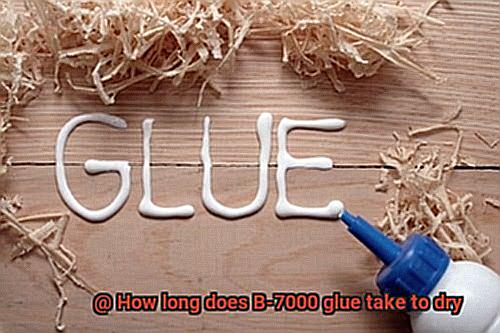
Have you ever wondered what makes B-7000 glue so popular among crafters, repair enthusiasts, and professionals? Well, let me tell you about this versatile adhesive that can tackle any project with ease.
B-7000 glue is a clear, liquid adhesive that comes in a small bottle with a precision applicator tip. It’s known for its moderate viscosity, which allows for smooth application without excessive dripping. But what sets B-7000 glue apart from other adhesives on the market?
First and foremost, B-7000 glue is famous for its exceptional bonding strength. It doesn’t matter if you’re working with glass, metal, plastic, fabric, or leather – this industrial-strength adhesive forms a durable bond that can withstand various environmental conditions. Say goodbye to worrying about your creations falling apart.
But here’s the real game-changer: B-7000 glue is incredibly flexible. Once it dries, it forms an elastic and flexible bond that can withstand movement or vibration. This makes it perfect for applications where some level of stress or impact is expected. You can rest assured that your glued items will remain intact even under challenging circumstances.
And that’s not all. B-7000 glue also boasts excellent resistance to water, oil, and chemicals. You can confidently use it both indoors and outdoors without worrying about deterioration due to exposure. Whether it’s rain or shine, this adhesive has got you covered.
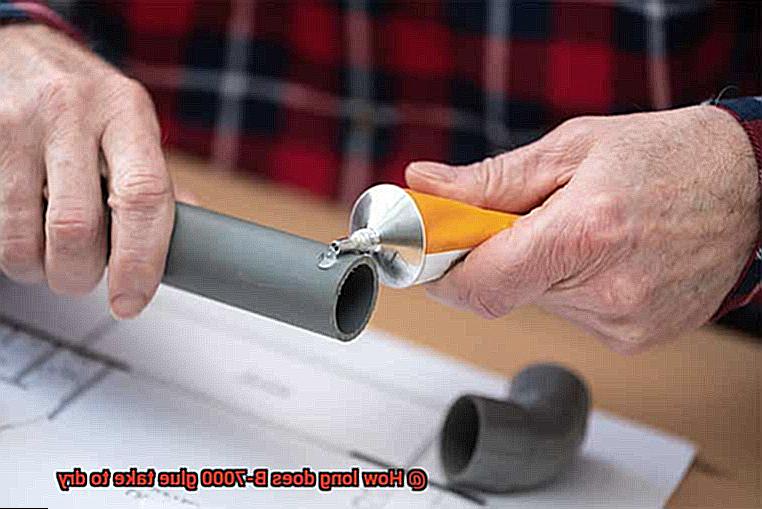
Now let’s talk about drying time. B-7000 glue offers a relatively quick drying time compared to other adhesives. It usually starts to dry within 10 to 15 minutes after application. However, keep in mind that the full curing process may take up to 24 hours. To ensure maximum bonding strength, it’s recommended to allow sufficient curing time before subjecting the bonded items to any stress or load.
The drying time of B-7000 glue can be influenced by factors such as temperature, humidity, and the thickness of the applied adhesive. Higher temperatures and lower humidity levels generally result in faster drying times. On the other hand, cooler temperatures and higher humidity can prolong the process. So, be mindful of the environment in which you’re working.
In some cases, if you’re in a hurry, you can use a heat source like a hairdryer or a heat gun to speed up the drying process. However, exercise caution to avoid overheating or damaging the glued surfaces. Remember, patience is key when it comes to achieving the best results with B-7000 glue.
Factors Affecting the Drying Time of B-7000 Glue
B-7000 glue is a versatile adhesive known for its impressive strength and flexibility in bonding a wide range of materials. However, achieving the best results requires an understanding of the factors that affect its drying time. In this article, we will delve into the science behind the drying time of B-7000 glue and explore how temperature, humidity, application thickness, porosity of surfaces, ventilation, curing conditions, and subsequent handling all play a role in this process.
Temperature:
Temperature plays a crucial role in the drying time of B-7000 glue. Higher temperatures accelerate solvent evaporation, leading to faster drying times. However, extremely high temperatures can cause the glue to cure too quickly, compromising its adhesive properties. Working in a cold garage during winter may prolong drying time, while direct sunlight on a hot summer day can cause the glue to dry too quickly.
Humidity:
Humidity levels also affect drying time. High humidity hinders solvent evaporation and prolongs the drying process, while drier environments facilitate faster drying. Crafting in a tropical location with high humidity will result in longer drying times compared to working in a dry climate.
Application Thickness:
The thickness of the glue layer applied influences drying time. Thicker layers take longer to dry as solvents need more time to evaporate. Applying B-7000 glue in thin, even layers ensures faster drying and optimal adhesion. When gluing fabric together, using a thin layer prevents seepage.
Porosity of Surfaces:
The porosity of surfaces being bonded is another crucial factor. Porous materials absorb solvents, extending drying time, while non-porous materials allow for faster drying. Bonding wood may take longer than bonding glass due to differences in porosity.
Ventilation:
Proper ventilation facilitates the drying process by enhancing solvent evaporation. Adequate airflow ensures quicker adhesion and shorter drying times. Working in a well-ventilated area or using fans to enhance air circulation is recommended.
Curing Conditions:
Following the manufacturer’s instructions regarding curing time and conditions is essential. Optimal curing conditions, including temperature and humidity, ensure maximum bonding strength and reduce the risk of premature failure.
Subsequent Handling:
Allowing sufficient drying and curing time before subjecting the glue to stress or load-bearing activities is crucial. Premature handling or excessive pressure can disrupt the drying process and compromise bond strength.
How Long Does B-7000 Glue Take to Dry?
B-7000 glue, a popular adhesive used for crafting, repairs, and DIY projects, is known for its versatility and reliability. However, when it comes to drying time, the answer isn’t as straightforward as a specific number of hours.
Several factors come into play, including temperature, humidity, materials being bonded, and even the thickness of the adhesive application.
Temperature plays a crucial role in the drying process of B-7000 glue. Higher temperatures tend to accelerate drying, while lower temperatures slow it down. It’s important to find a balance within the recommended temperature range of 10°C to 32°C (50°F to 90°F) for optimal results.
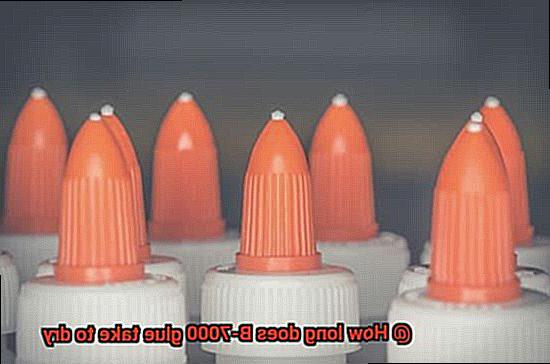
Extreme temperatures can potentially affect the performance of the adhesive, so it’s best to avoid them.
Humidity levels also have an impact on the drying time of B-7000 glue. Higher humidity can prolong drying, while lower humidity speeds it up. If you find yourself in a humid environment, expect a longer wait for complete drying.
Conversely, in drier conditions, the drying time may be shorter. Taking note of the humidity level will give you a better idea of what to expect.
The thickness of the adhesive application and the porosity of the materials being bonded are additional factors to consider. Thicker layers will naturally take longer to dry compared to thin applications. Likewise, porous materials tend to absorb more adhesive, leading to longer drying times. Following the manufacturer’s instructions and applying an appropriate amount of adhesive will ensure efficient drying.
Proper ventilation is crucial during the drying process as it allows the solvent in the adhesive to evaporate effectively. Adequate airflow aids in quicker drying times. If possible, place the glued items in a well-ventilated area to facilitate the drying process.
While B-7000 glue may feel dry to the touch after a few hours, it’s important to exercise caution before handling or using the glued items. The adhesive is still in the process of curing internally. Applying excessive stress or pressure on the bond before it’s fully cured can compromise its strength. It’s advisable to wait until the recommended drying time has elapsed, usually around 24 to 48 hours, before using or handling the glued items.
Initial Tackiness of B-7000 Glue
Prepare to be captivated by the extraordinary world of glue. It’s fascinating how a seemingly simple substance can hold our projects together with unwavering strength and durability.
Today, we embark on a journey into the realm of B-7000 glue, unraveling the secrets behind its remarkable initial tackiness. Brace yourself, fellow craft enthusiasts, as we unlock the superpower of this adhesive wonder.
The Lightning-Fast Adhesion Miracle:
B-7000 glue is renowned for its impressive initial tackiness, which refers to how quickly it adheres to a surface after application. Imagine this: within seconds or mere minutes, your glued items bond together like long-lost friends at a joyous reunion. It’s like pure magic. But wait, there’s more.
Factors Influencing Drying Time:
Just like superheroes have their Achilles’ heel, B-7000 glue’s drying time is influenced by various factors such as temperature, humidity, and even the materials you’re bonding. Think of it as a recipe for success.
Higher temperatures and lower humidity levels accelerate the drying process, propelling your project towards completion. Conversely, cooler temperatures and higher humidity levels slow things down, demanding a touch more patience.
The Art of Precision Repositioning:
This is where B-7000 glue truly shines. During the initial tackiness stage, you possess the power to reposition or adjust your glued items before the glue sets completely. It’s akin to receiving a second chance at achieving perfect alignment. This flexibility proves invaluable for projects that demand meticulous precision, where every millimeter counts.
Unleashing Versatility in Full Splendor:
B-7000 glue is an unparalleled superhero when it comes to versatility. It fearlessly bonds materials such as glass, rubber, metal, plastics, and beyond. Whether you’re creating dazzling jewelry or mending cherished gadgets, this adhesive has got your back.
The Virtue of Patience:
Remember, greatness comes to those who wait. While B-7000 glue boasts an impressive initial tackiness, it’s not instantly cured or dried. It requires a touch of time to reach its ultimate strength and bond. So exercise patience and grant it the time it needs to weave its enchantment.
Environmental Conditions and Drying Time
In this blog post, we will embark on a captivating journey to explore the intricate relationship between environmental conditions and drying time. Prepare to be amazed as we unravel the secrets behind achieving flawless adhesive mastery.
Temperature: The Enchanting Maestro
Temperature reigns supreme in the symphony of glue drying. Like a maestro conducting an orchestra, it dictates the pace of the drying process. Higher temperatures orchestrate faster drying times, while lower temperatures gently slow down the rhythm. Beware, however, as extreme heat can force the glue to cure prematurely, potentially compromising the strength of the bond. Strike a harmonious balance by heeding the manufacturer’s instructions for the optimal temperature range.
Humidity: The Mysterious Moisture Maze
Humidity levels hold the key to unlocking the mysteries of glue drying. As if navigating through a labyrinth, higher humidity can elongate drying time by impeding solvent evaporation. Conversely, lower humidity acts as a gentle breeze, hastening solvent evaporation and accelerating drying. To conquer this moisture maze, find the elusive sweet spot that ensures a smooth and efficient drying process.
Ventilation: The Breath of Life
Ventilation breathes life into the drying process. It serves as nature’s graceful dance partner, twirling and swirling to remove moisture and solvents from the glue. Adequate airflow is essential for promoting faster drying. Avoid confining your adhesive masterpiece in stagnant spaces or poorly ventilated areas, as they can extend drying time. Embrace openness and let the air flow freely to witness your creation come to life.
Layer Thickness: The Delicate Tapestry
The thickness of the glue layer weaves an enchanting tapestry that affects drying time significantly. Like a delicate whisper, thin layers dry faster as they offer less material for solvent evaporation. Embrace the mantra of “less is more” when working with B-7000 glue, and witness the magic of swift drying unfold before your eyes.
Surface Type: The Porous vs Non-Porous Dichotomy
The type of surface being glued adds a touch of intrigue to the drying process. In this cosmic dance, non-porous surfaces take center stage, drying faster as they resist solvent absorption. Porous surfaces, on the other hand, are more eager to absorb solvents, prolonging the drying time. Embrace this interplay between materials and adjust your expectations accordingly to achieve optimal drying results.
Manufacturer’s Instructions: The Holy Grail of Brilliance
To unlock the full potential of B-7000 glue, heed the divine guidance bestowed upon us by the manufacturer. Each product possesses its own unique character and requirements, intricately woven into its instructions. Treat these instructions as sacred scriptures that illuminate the path to adhesive brilliance.
Accelerating the Drying Process
Are you tired of waiting for glue to dry? We’ve all been there – holding our breath, crossing our fingers, and praying that our project doesn’t fall apart before the glue sets. Well, fear not. Today, we’re going to dive into the world of B-7000 glue and discover some tips and tricks to accelerate the drying process. Get ready for a wild ride.
First things first, let’s talk about heat. Just like a warm hug on a chilly day, applying heat to the glued area can work wonders. Grab your trusty hairdryer or heat gun and set it to a low temperature. Gently blow-dry the glued surface and watch as the glue magically dries faster. It’s like witnessing a superhero in action.
Next up, humidity. Ah, the arch-nemesis of fast-drying glue. High humidity levels can slow down the drying process, so it’s time to fight back. Invest in a dehumidifier or find a low-humidity environment for your project. Your glue will thank you as it dries swiftly and efficiently.
Now, let’s talk about pressure. No, not the stress-inducing kind, but the kind that helps your glue bond like never before. Grab some clamps, weights, or even use your own hands to firmly press the glued surfaces together. The pressure helps squeeze out any excess moisture and promotes a stronger bond. It’s like giving your glue a big bear hug.
But wait. Before you sprint off to try these techniques, remember that patience is still key. While these methods can speed up the drying time, it’s important to allow sufficient curing time for optimal bonding strength. Rushing the process may result in a weaker bond that could leave you in tears.
So, there you have it – your guide to accelerating the drying process of B-7000 glue. With heat, low humidity, and a little pressure, you’ll be amazed at how quickly your projects come together. Just remember to follow the manufacturer’s instructions and allow enough time for your glue to work its magic. Now go forth and conquer the world of glue with confidence.
In conclusion, B-7000 glue is a popular adhesive known for its strong bonding capabilities and versatility. While it typically takes about 24 to 72 hours to fully cure and reach its maximum strength, there are several techniques that can help accelerate the drying process.
- Apply heat: By using a hairdryer or heat gun set at a low temperature, you can speed up the chemical reaction of the glue and reduce drying time.
- Reduce humidity: High humidity levels can slow down the drying process. Investing in a dehumidifier or finding a low-humidity environment for your project can help the glue dry more quickly.
- Apply pressure: Using clamps, weights, or your own hands to firmly press the glued surfaces together can squeeze out excess moisture and promote a stronger bond.
Strengthening and Curing Over Time
In the world of adhesives, B-7000 glue reigns supreme with its exceptional strength. However, this powerhouse adhesive requires a specific amount of time to fully strengthen and cure.
So, what factors influence the curing process? Let’s delve into the details.
Firstly, let’s talk about environmental conditions. Temperature and humidity play a crucial role in the curing process of B-7000 glue. Higher temperatures and lower humidity levels act as catalysts, accelerating the curing process. Conversely, lower temperatures and higher humidity levels can slow it down. So, if you’re eager to complete your project in record time, consider working in a warm and dry environment.
Next, let’s consider the thickness of the glue layer. Thicker layers of B-7000 glue demand more time to cure compared to thinner layers. It’s important to keep this in mind during application to ensure that you allow sufficient time for complete curing. Rushing the process might compromise the bond’s strength, and nobody wants a weak bond holding their project together.
Proper ventilation is another critical factor in the curing process. Ensuring adequate airflow is essential to disperse any fumes released by the glue safely. Not only does this keep your workspace smelling fresh, but it also protects you from inhaling potentially harmful substances. So, crack open a window or turn on a fan to keep the air flowing and promote optimal curing.
Now, it’s important to understand that patience is key when it comes to strengthening and curing B-7000 glue. Although it may feel dry to the touch within a few minutes or hours, it needs at least 24 hours to reach its maximum bonding strength. During this crucial time, avoid subjecting your glued items to any stress or strain that could weaken the bond.
Tips for Optimal Bonding Strength
When it comes to creating strong and durable bonds between different materials, B-7000 glue is a reliable choice. To maximize its bonding strength, follow these expert tips and tricks. With proper surface preparation, application techniques, and patience, you can achieve optimal results with B-7000 glue.
Clean and Prepare the Surfaces:
Before applying B-7000 glue, take the time to clean and prepare the surfaces you want to bond. Dirt, dust, or grease can create barriers that prevent the glue from adhering properly. Use a mild detergent or rubbing alcohol to remove any contaminants and ensure the surfaces are clean and dry.
Apply the Right Amount of Glue:
Applying the right amount of B-7000 glue is crucial for optimal bonding strength. Too little glue may result in a weak bond, while excessive amounts can cause messy seepage. Follow the manufacturer’s instructions or apply a thin, even layer of glue on both surfaces to be bonded. Remember, a little goes a long way.
Allow Sufficient Drying Time:
While B-7000 glue may dry quickly to the touch, it needs sufficient time to fully dry and cure. Patience is key. Wait at least 24 hours before subjecting the bond to any stress or load. This allows the glue to reach its maximum strength and ensures a secure bond that will stand the test of time.
Apply Even Pressure:
To achieve an even and strong bond, apply even pressure on the bonded surfaces while the glue dries. Use clamps or other suitable methods to hold the materials firmly together. This prevents any shifting or movement that could weaken the bond. Keep everything tight and secure.
Avoid Excessive Stress:
While B-7000 glue creates robust bonds, it’s essential to avoid subjecting them to excessive stress until they are fully cured. Be mindful of heavy loads or extreme forces that could compromise the bond. Treat your projects with care and avoid exposing them to harsh conditions.
xPyKSFTqPd4″ >
Conclusion
B-7000 glue, a popular adhesive in the crafting and DIY community, is known for its strength and versatility.
One common question that arises when using this glue is how long it takes to dry. The drying time of B-7000 glue can vary depending on several factors such as temperature, humidity, and the materials being bonded.
On average, it takes about 24 to 72 hours for the glue to fully cure and reach its maximum strength. However, it’s important to note that the initial drying time can be much shorter, usually within 10 to 30 minutes.
During this time, the glue will form a tacky surface that allows for repositioning or adjustment of the bonded items. But don’t be fooled by this initial stickiness – it’s crucial to give the glue enough time to fully dry and cure for optimal results.
So whether you’re working on a delicate jewelry project or repairing a household item, make sure to plan ahead and allocate enough time for the glue to dry completely before handling or applying any stress to the bond.

